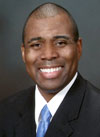 By Bryce Tolefree, Wisconsin Defense Council President
By Bryce Tolefree, Wisconsin Defense Council President
March 2, 2011 – The Wisconsin Defense Counsel (WDC) fully supported the recently adopted changes to Wisconsin’s civil justice system. Before addressing the legislation in more detail, it is important to understand, in a broad sense, what was adopted and where those changes place Wisconsin in relation to other states.
It is also important to note that the changes were made as part of a special legislative session, the purpose of which was to improve Wisconsin’s business and litigation atmosphere.
11 WI Act 2 (Act 2) amends Wisconsin’s products liability law by changing the standard for determining product (strict) liability from the “consumer expectation test” to “reasonable alternative design,” which is used by 46 other states.
The Wisconsin Association of Justice asserts that this change would allow irresponsible companies that “manufacture products that kill and maim people [to be] ‘left off the hook’ for their negligence.” This simply is not true, and the law deals with strict liability and not negligence.
With adoption of the Daubert v. Merrell Dow Pharmaceuticals, Inc.1 standards for assuring the reliability of expert opinion evidence, Wisconsin joins more than 30 other states and the entire federal court system.
When the Wisconsin Supreme Court in 2005 adopted the risk contribution theory in the Thomas v. Mallett2 lead paint decision, Wisconsin became the only state in the country to have such a standard that allowed bypassing traditional requirements for causation.

This was deemed the most radical departure from traditional tort law in this country in decades. The recent legislation reverses the Thomas decision while continuing to allow market share liability in very limited situations.
Act 2 also places a cap on punitive damages, which responds to U.S. Supreme Court constitutional concerns and urging from Wisconsin Supreme Court Justice Patrick Crooks in Wischer et al. v. Mitsubishi Heavy Indus. Am., Inc. et al.3 These are not radical changes. They do not block anyone’s access to the courthouse. These changes, however, do help to assure fairness to all litigants and to improve the state’s litigation environment.
In what follows, attorneys Michael B. Brennan, James J. Mathie, and James T. Murray discuss the main provisions supported by WDC.
Product Liability

By James J. Mathie
So Wisconsin has codified product liability law with some changes.4 What is the practical effect of this for lawyers? Likely the changes won’t be all that dramatic.
The manufacturing defect case remains largely unchanged. With respect to the design defect case, requiring proof of reasonable alternative design only affects the very few cases where the plaintiff was relying entirely on the consumer expectation test. Such cases are few and far between.
The evidentiary changes – many of which track federal law – will require lawyers handling product liability cases to consider some new questions. First, lawyers should consider whether the seller contractually assumed any of the manufacturer’s duties. Second, lawyers should consider whether the seller had a reasonable opportunity to test or inspect a product in a sealed container. Finally, lawyers should determine whether the manufacturer made a representation that the product would last more than 15 years.
But the most significant changes for lawyers may be something that won’t come up in litigation. Because the law includes a safe harbor for sellers or distributors, sellers and distributors will be encouraged to do business only with reputable, identifiable, and insured manufacturers. Under the safe harbor, the seller or distributor is not liable so long as the manufacturer or its insurer is subject to service of process within the state.
Lawyers who represent sellers and distributors will want to fully advise their clients to make any necessary changes to their business practices and contracts to take advantage of the safe harbor in the law. And lawyers performing risk assessments for sellers will want to make sure their clients have not unknowingly contractually assumed the duties of a manufacturer.
Expert Testimony

By Michael B. Brennan
Under section 34 of Act 2, admissibility of expert witness testimony hinges on compliance with the same standard set forth in Federal Rule of Evidence 702 and Daubert.
Under the former rule, the trial judge would simply look to see if the potential expert witness had qualifications, and if that expert witness’s opinion would be of some assistance to the jury. The scientific validity of the expert witness’s opinion was not a required subject for an admissibility determination.
Under the new rule, the trial court will consider additional factors to determine whether the methodology used by the expert witness is valid, including:
1) whether the theory or technique in question can be and has been tested;
2) whether it has been subjected to peer review and publication;
3) its known or potential error rate;
4) the existence and maintenance of standards controlling its operation; and
5) whether it has attracted widespread acceptance within a relevant scientific community.
The practical effect of this change may be more Daubert hearings challenging the admissibility of expert opinions before cases go before trial. The change may also make lawsuits more efficient by preempting lawsuits without sufficient scientific basis, and avoiding jury trial time for the same reason.
Federal district courts and most states’ trial courts handle Daubert hearings within their normal motion dockets. As the rules provide with regard to other evidentiary determinations, trial judges will decide what is legitimate scientific expert opinion testimony.
Risk Contribution
By James T. Murray Jr.
Section 30 of Act 2 creates section 895.046 titled, “Remedies against manufacturers, distributors, sellers, and promoters of products.” The practical effect of this section is to place limits on the doctrine of “Risk Contribution,” first judicially created in Collins v. Eli Lilly Co.,5 and expanded in Thomas v. Mallett. Under Thomas, a plaintiff claiming injury due to ingestion of lead from pigment or paints was relieved of the requirement of product identification. Once a plaintiff made a prima facie case, the burden of proof shifted to the defendant to prove that it did not produce or market the product that allegedly injured the plaintiff. If the defendant failed in its burden of proof, it could be liable for all the injuries sustained by the plaintiff, whether or not the defendant actually manufactured the injury-producing product.
The new law does not abolish risk contribution but tightens up the circumstances under which it can be invoked and changes the elements the plaintiff must satisfy before it can establish liability under the risk contribution doctrine.
The practical effect of the new law will be relatively narrow, since it only applies to cases where the manufacturer of the offending product cannot be identified – most typically so-called “toxic torts.” However, in those cases, it will be substantially more difficult to establish liability, since risk contribution can only be invoked in cases where the claimant cannot obtain redress “from any other person.”
This suggests, for example, that workplace injuries might be ineligible, since workers’ compensation will be available to the claimant.
In addition, the provision in subsection (5) that no liability can attach if it has been more than 25 years since the defendant last made or sold the product will make the doctrine less available than under Thomas.
The net effect under these and other provisions of the Act is to make risk contribution unavailable as a theory of recovery except in very rare cases, which is probably the way the doctrine was intended to be used in the first place.
About the authors
Bryce Tolefree is associate general counsel for American Family Mutual Insurance Co., Madison, and president of the Wisconsin Defense Counsel. James J. Mathie is a solo practitioner of Law Offices of James J. Mathie, Waukesha, and a past WDC president. Michael B. Brennan is a partner at the law firm of Gass Weber Mullins LLC, Milwaukee. James T. Murray is a shareholder of the law firm Peterson, Johnson & Murray S.C., Milwaukee.
Endnotes
1Daubert v. Merrell Dow Pharmaceuticals, Inc., 509 U.S. 579 (1993)
2Thomas v. Mallett, 2005 WI 129, 285 Wis. 2d 166, 342 N.W.2d 37 (1984).
3Wischer et al. v. Mitsubishi Heavy Indus. Am., Inc. et al., 279 Wis. 2d 4, 694 N.W.2d 320 (2005).
4See 2011 WI Act 2, sec. 31; Wis. Stat. sec. 895.047.
5Collins v. Eli Lilly Co., 116 Wis. 2d 166, 342 N.W.2d 37 (1984)
Related
- Perspective on tort reform: Law makes it more difficult for injured parties to achieve justice – InsideTrack, March 2, 2011
- The Daubert Standard in Wisconsin: A Primer (forthcoming in the March issue of Wisconsin Lawyer)
- PINNACLE, Litigation, Dispute Resolution & Appellate Practice Institute, Frontier Airlines Center, Milwaukee, May 5-6
- Hot Topics in Personal Injury Litigation, May 5, 10:15-10:45 a.m.
- New Legislators, New Legislation: How the 2011 Changes to Civil Litigation Will Affect Your Practice, May 6, 1:15-2:05 p.m.
- Practical Tips and Techniques for Handling New Legislation (Daubert, Frivolous Lawsuits, Punitive Damages), May 6, 2:10-3 p.m.
